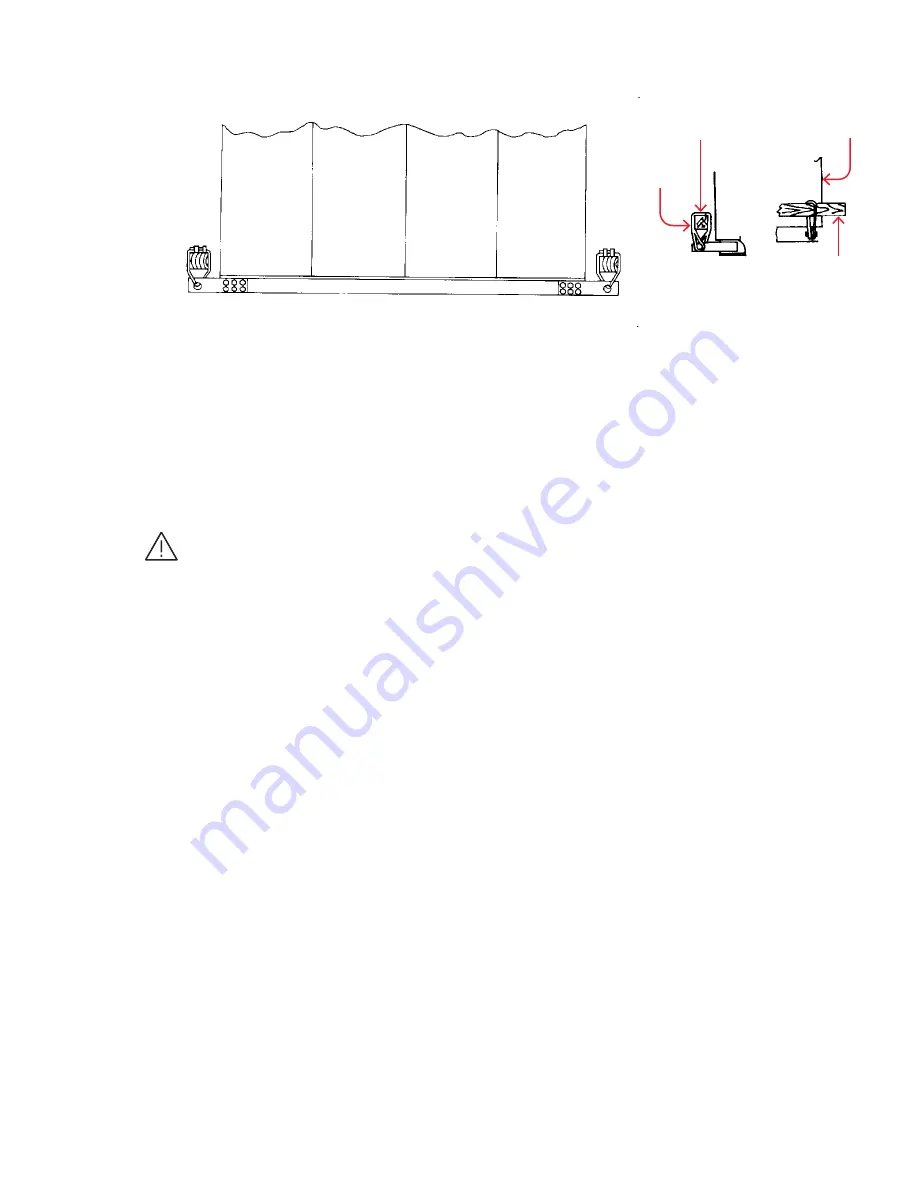
12
2 . r eC eI v I N G , h a N D L I N G a N D s To r aG e
Jacks
Jacks may be used in place of forklifts to raise and
lower switchgear.
1. Place a jack under the front and rear corners
of one end of the line-up. Fig. 2.9 and 2.10 illustrate
the use of jacks with outdoor equipment.
Caution: Do not place jacks in any other location other
than the front and rear corners of the switchgear.
Doing so may result in serious damage to the
switchgear equipment.
Prudence: Ne placez pas de vérins ailleurs que dans les
coins avant et arrière de l'appareillage électrique. Vous
risqueriez d'endommager gravement l'appareillage.
2. Raise the switchgear evenly and just enough to
position a roller beneath the equipment. Gently
lower the switchgear onto the rollers. Repeat the
procedure at the opposite end of the switchgear,
raising the gear far enough to place the appropriate
number of rollers under the skids, spacing them
evenly across the width
of the line-up. Gently lower the gear onto
the rollers.
3. While carefully pushing the switchgear to its final
site position, the rollers that are freed from the rear
of the switchgear are then repositioned at the
forward end. This procedure should be continued
until the switchgear is in its final location.
4. When the switchgear is in its final position,
remove all lag bolts holding the shipping skids to
the switchgear line-up.
5. Place one jack at each corner, front and rear, of the
switchgear. Carefully raise the line-up evenly and
remove the rollers and the shipping skids. Evenly
lower the line-up to the floor and remove the jacks.
—
Partial front or rear
view of jacking
—
Partial side view
of jacking
—
Front view
—
Fig. 2.10
Recommended
method of jacking
outdoor enclosure
Jacking timber
not furnished with
switchgear
Cable
Rear or front
Jack here














































